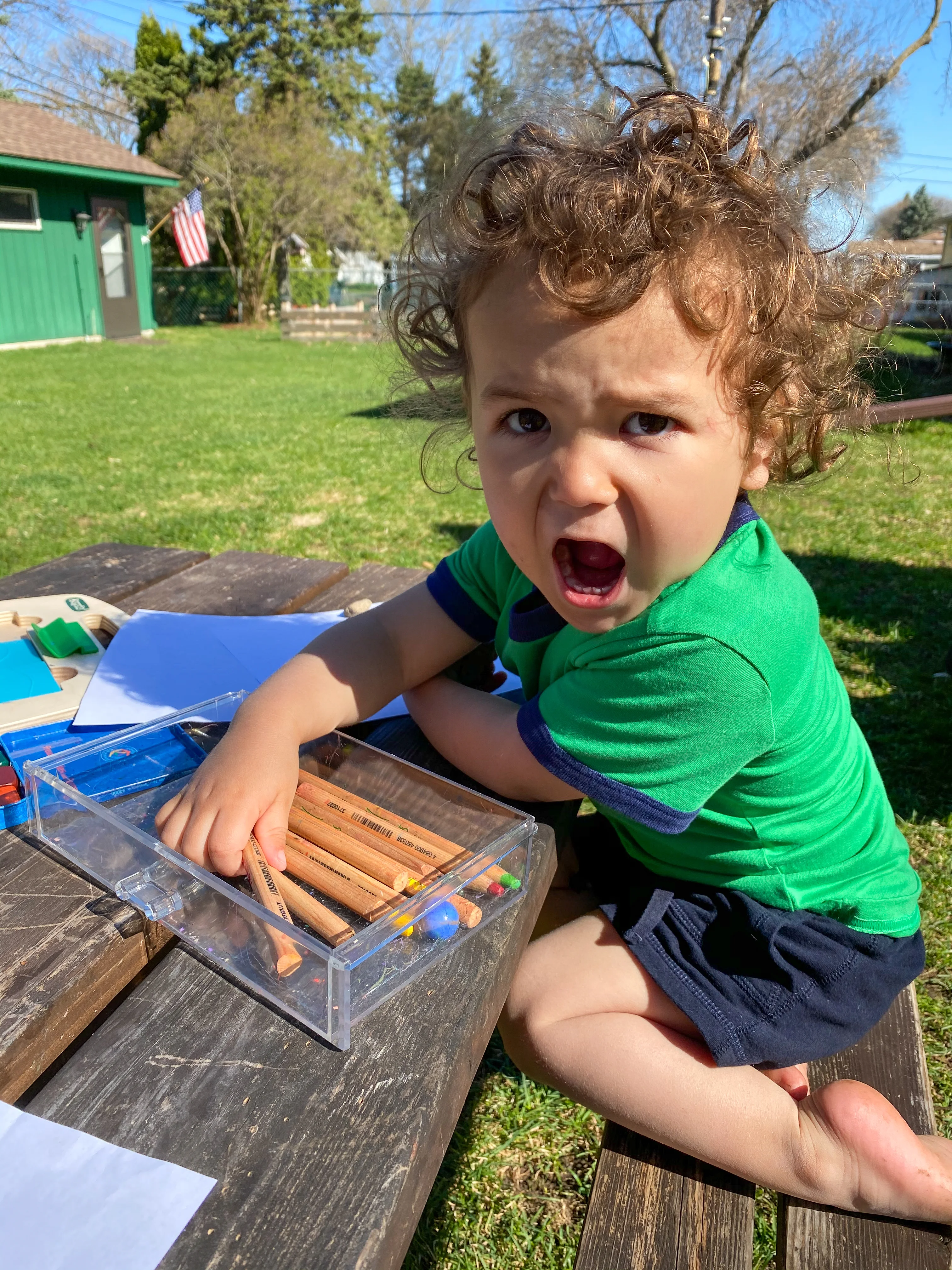Sometimes it feels like my main job as a Montessori parent is responding to big feelings and emotions. Especially over the last couple of months when we've all been at home together for extended periods of time. It can be difficult to remember to respond (instead of react) in a calm, collected and helpful manner. In these difficult moments, it can be tempting to jump in and try to distract, solve or explain away a child's emotional response. But, in the end, that's not helpful to our children. By naming feelings and helping them to work through them, we normalize all feelings and help them to eventually handle them on their own.
I've found though that how we respond to a feeling really depends on the situation and the child. But, there are some general rules that I keep in mind depending on the type of emotion I am observing. I've made a couple of cheat sheets to help me explain how I approach emotion. First, is the sliding scale of emotions.
On the left side (happy and sad) are the emotions that I have observed (with my children) are those that my children are most capable of having a conversation about. These are the emotions that they might most easily be able to name. They may be able to respond to questions, to choices, and to explain. How I approach these feelings is a bit different than how I approach those on the right.
As the scale of emotion moves more to the right, the emotional response tends to get larger. The kids tend to me more out of control over their response and less able to reason, explain, or maybe even understand what they are feeling. This is not the time to try and hold a conversation, as questions, or reason. Instead, I respond with more sportscasting (neutrally observing and explaining the situation as a 3rd party observer) and holding space (just being with them and keeping them physically safe.)
Just keep in mind that the length of each child's scale can change. So some children might have vastly different responses to sadness and anger, and another child it might be very similar. You really have to observe and know your child. And, know that your child can feel more than one emotion from either scale at one time. So your child might be both frustrated and anxious. Or angry and excited, for example. Observation will help you decide the best response.
Keeping this sliding scale in mind, I change the phrases I use to respond accordingly. This graphic includes some examples that I might use when observing these emotions. This isn't every possible way to respond, but some of my staples. You'll notice that these phrases sort of mirror the responses in the sliding scales. So at the happy end of things, I might say "tell me about your drawing" and engage them in a conversation. But if there is anger, I may just say "I hear that you're angry. I'm here for you when you're ready" and then just be there quietly modeling some deep breaths.
Here are some more examples on how I would use these phrases:
- "I see your big smile."
- "I see that you're frustrated by the train."
- "You are angry."
- "You can take a deep breath."
- "I hear your words."
- "That was frustrating when the blocks fell over."
There are so many other similar phrases that work just as well. The goal is just to acknowledge, recognize, and name the feeling in a way that your child can access in the moment. We want to leave additional solutions out of the equation, and try not to add judgment to their emotions. Additional learning about the emotions or how to better handle a situation when your child is calm.
If this model is helpful for you sign up below for a free PDF copy of these images.
If this model is helpful for you sign up below for a free PDF copy of these images.
---






